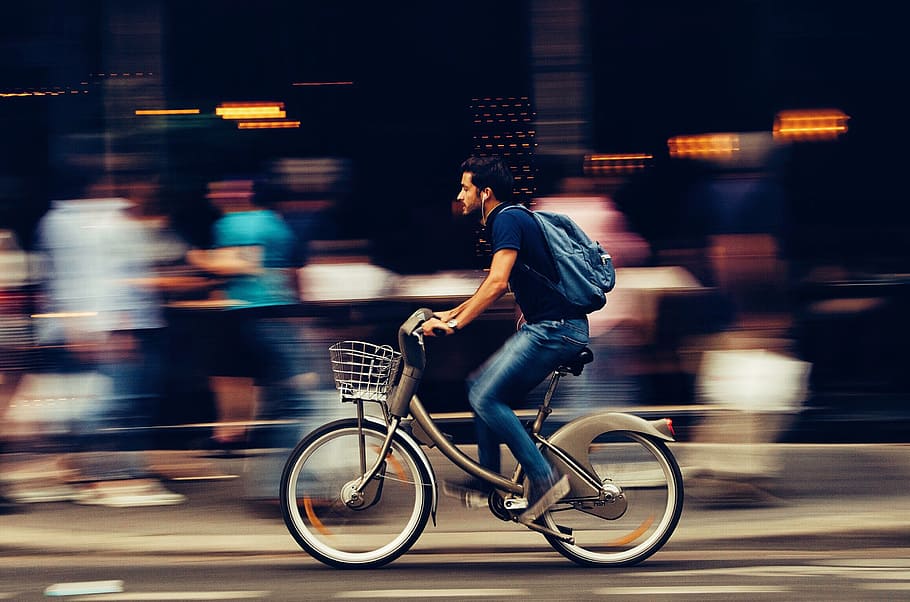 Avoiding a serious bike crash in Virginia can be as simple as following the rules for riders and drivers that are spelled out in state laws and local ordinances.
Avoiding a serious bike crash in Virginia can be as simple as following the rules for riders and drivers that are spelled out in state laws and local ordinances.
Reread that first sentence before continuing.
Keeping bicyclists safe, healthy and alive demands responsibility and respect from riders and drivers. As true as that is and will always be, the consequences of a car or truck colliding with a bicycle are usually catastrophic for the rider. Of the 633 crashes involving bikes recorded by the Virginia Department of Motor Vehicles during 2018, just short of 600 (591, to be exact) left riders injured badly enough to require medical care. Another 13 crashes involving bikes left the rider dead.
The moral is that drivers should do all they can to share the road safely. They must watch for riders, slow down when necessary and always check and recheck for bicycles before making turns.
LEARN MORE
- A Look at the Growing Number of e-Bike Accidents
- Must-Know Pedestrian Laws in Virginia
- Safety Tips for Bike Riders From a Virginia Personal Injury Lawyer
- Virginia Beach Car Accident Lawyers
Know Where and How to Ride
Virginia classifies bicycles as vehicles and grants, with certain exceptions, bike riders all the rights and responsibilities of drivers. The most-relevant state statute for riding bicycles legally is Section 46.2-905 of the Code of Virginia, which stipulates that riders “shall ride as close as safely practicable to the right curb or edge of the roadway.”
The stay-right rule is waived in the following situations:
- When overtaking and passing another vehicle proceeding in the same direction;
- When preparing for a left turn at an intersection or into a private road or driveway;
- When reasonably necessary to avoid conditions including, but not limited to, fixed or moving objects, parked or moving vehicles, pedestrians, animals, surface hazards, or substandard width lanes that make it unsafe to continue along the right curb or edge;
- When avoiding riding in a lane that must turn or diverge to the right; and
- When riding upon a one-way road or highway, a person may also ride as near the left-hand curb or edge of such roadway as safely practicable.
Bicycles are banned from interstates, and riders should stick to roads where the posted speed limit is 35 mph or lower. Riders should also not ride two or more abreast in a way that impedes traffic.
Each city and county in Virginia sets and enforces its own additional rules for where and how bicyclists can ride. These rules often vary from one area to another within a municipality. For instance, Virginia Beach allows bikes on sidewalks except at the Oceanfront. Norfolk requires the use of designated bike lanes where those have been established. Even when riding on the sidewalk is not explicitly prohibited, staying off the sidewalk is a good idea for preventing collisions with pedestrians.
Follow the Rules of the Road
As vehicle operators, bike riders must obey traffic lights, stop and yield signs, and requirements to indicate turns using hand and arm signals. Bikes ridden at night must be equipped with reflectors and a headlight. Riders must also yield right of way to pedestrians and while entering or exiting parking lots.
Bicyclists will not be ticketed for speeding or operating too far below the speed limit. At the same time, they must travel with the flow of traffic. Riding between lanes, weaving in and out slow-moving vehicles, or passing other bicyclists in an unsafe manner are all dangerous and against the law.
Wear a Properly Fitted Bike Helmet
State law and local ordinances require bike helmets for children younger than 14. Certain cities also mandate helmets for adult riders, but state law makes that optional.
In all events, a driver who hits and injures a bicyclist cannot cite the injured victim’s failure to wear a bike helmet as contributory negligence of the kind that automatically disqualifies an insurance claim or a personal injury lawsuit.
Yield Right of Way While Driving
Virginia state law requires drivers to yield right of way to bicyclist while making turns. Further, a driver who approaches a bike rider from behind must only pass when it is possible to do so at a reasonable speed and while leaving a minimum of three feet between the bike and their vehicle.
Last, drivers should practice the Dutch reach after parking and before opening their vehicle’s door. This maneuver involves reaching one’s right hand across their body and, thereby, being forced to look into their blind spot for oncoming bicyclists. Doing the Dutch reach greatly reduces the risk for dooring.
EJL